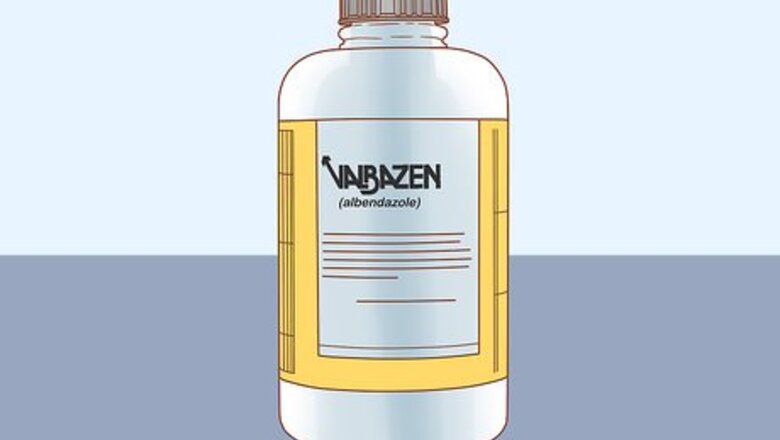
views
Preparing the Drench

Purchase drench as recommended by your veterinarian. There are 2 main types of drench medicine: narrow spectrum and broad spectrum. Narrow spectrum drenches tackle a specific parasite, making them perfect for goats that you’ve had professionally diagnosed. Broad spectrum drenches tackle lots of different parasites, making them a good option when you don’t know what’s causing the infestation. Some good deworming drenches include Valbazen, SafeGuard, Ivomec, Cydectin, Prohibit, and Rumatel. You can find these at various animal supply stores and pet pharmacies. Always check the label to verify whether or not a drench is safe for goats. Drenches also come in 3 subtypes: white, clear, and mectin. Switch which subtype you use every 12 months so your goat doesn’t build up an immunity.

Weigh your goat using a bathroom scale. In order to calculate the proper drench dosage for your goat, you’ll first need to know its weight. To find this, measure yourself using a bathroom scale, then pick up your goat and step on the scale again. The difference between the first and second measurement is the weight of the goat. For more precise results, or if the animal is too heavy to lift, weigh your goat using a commercial livestock scale. Some feed stores may have a scale that you can use to get an accurate weight, so ask if one is available. When drenching a large herd of goats, separate the animals into sections based on size. Then, weigh 4 to 6 goats in each group. Determine the drench dosage based on the average weight per section.
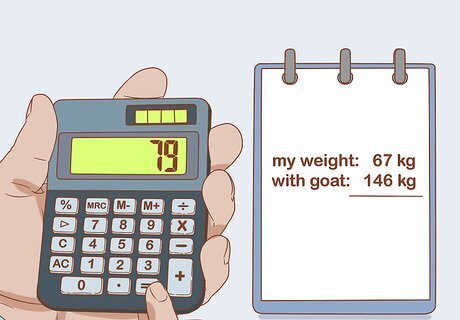
Calculate a proper drench dosage using your goat’s weight. Read the label printed on your drench container to see how much medicine it recommends for goats that weigh similarly to yours. In most cases, you’ll need to calculate the dosage by taking the recommendations immediately above and below your goat’s weight and averaging them together. Administering too much drench can poison your goat, so make sure to calculate the dosage carefully. If your drench container has multiple sets of recommendations, make sure to follow the ones for goats, not sheep or other forms of cattle.

Load and test your drench gun. Calibrate your gun so it delivers a dose equal to your goat’s recommended drench dosage. Then, pour drench medication into the gun’s central chamber and squirt a dose into a graduated cylinder. Finally, check the cylinder to make sure the dosage amount is correct. If the recommended dosage is higher than your gun’s maximum dose setting, pick an option that divides into the recommended dosage. For example, if your goat needs 20 ml (0.70 imp fl oz) of drench, you can give it 2 doses of 10 ml (0.35 imp fl oz). Every drench gun has a different calibration process, so check your gun’s user manual for model-specific information. Check the label on your drench container to see if you need to shake it before use, as many of them must be shaken.
Administering the Drench
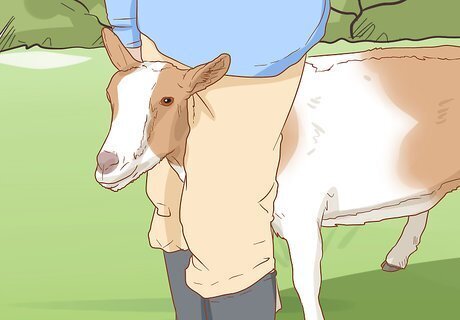
Restrain your goat’s head. To restrain a small, calm goat, approach it from behind and straddle its neck with your legs. This will prevent the animal from turning its head, giving you a clear, unobstructed view of its mouth. If you have a large or uncooperative goat, you’ll need to recruit a second person to hold the animal’s head steady. If possible, lift your goat’s head by 1 or 2 in (2.5 or 5.1 cm) while you restrain it. This will make it easier for the goat to swallow the medicine. Choose a place that your goat can't escape from, such as the barn or a pen. You could also try backing it into the corner, which may help you keep it from wriggling free. Keep your fingers away from the goat’s mouth to minimize your risk of getting bit.

Push the drench gun into your goat’s mouth. Push the nozzle of the drench gun into the corner of your goat's mouth. For the best results, try to position the nozzle so that it rests over the animal’s tongue and points toward its throat. Do not insert the nozzle through the goat’s front teeth as drench guns are not designed for that position.

Squeeze the gun’s trigger to deliver the drench. Slowly squeeze the trigger of the drench gun to deliver the drench medicine. If necessary, squeeze the trigger several times to administer the full, recommended dose. While delivering the dose, do not push the nozzle further into the goat’s throat. Doing so can lead to mouth cuts, broken teeth, and lung issues. Elevate the goat's head slightly so that it's more likely to swallow the medicine and not drool it onto the floor. If the goat struggles, let it go so that it doesn't aspirate.

Release the goat after it swallows the drench. Hold your goat steady until it swallows the entire dose of drench. Then, remove the drench gun and release the goat. If you do not wait for the goat to swallow the drench, the animal will most likely spit it back out. If the animal spits, coughs, or vomits up any of the drench, it will not have received the full dosage. If this happens, check the product label to see if you can administer a partial dose.
Wrapping Up

Clean your drench gun and put away your drench supplies. Once you’re finished drenching, pour any unused medicine back into your drench container and store it in a safe room away from direct sunlight. Then, clean your drench gun with warm water (no soap) and put it in a sanitary area. To make sure it stays good, store your drench medicine at a temperature between 39 and 77 °F (4 and 25 °C).
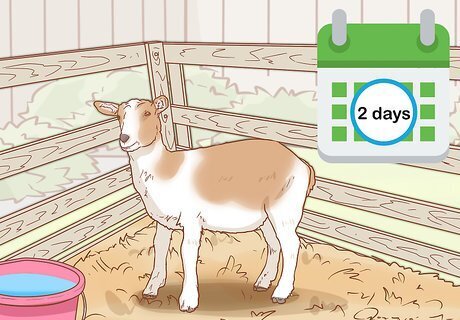
Quarantine your goat for 2 days after treatment. If you have the necessary space, keep your drenched goat in a clean yard or pasture away from other goats and sheep. Do this for 1 to 2 days after treatment to minimize the goat’s risk of re-contamination. If you don’t have a yard or pasture to use, keep your goat in a private pen instead.
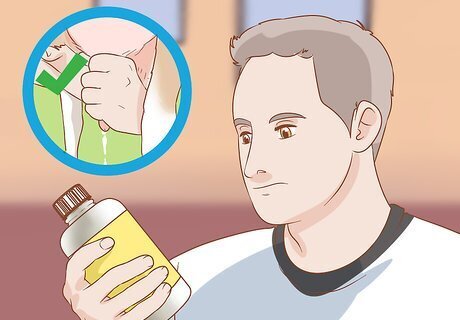
Check your drench label to see if the goat's milk is safe to consume. Some drenching medications temporarily taint a goat’s milk, making it unsuitable for humans. Check your drench container to determine if this is the case and, if so, how long you must wait before consuming the goat’s milk. Though some drenches have a fairly brief withholding time, others may require you to wait for up to 28 days.
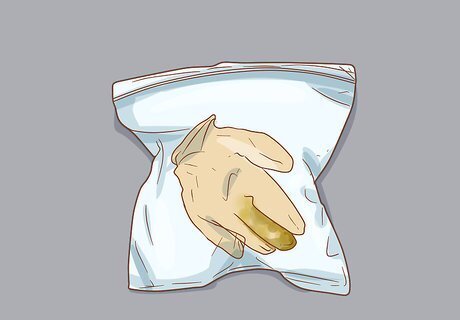
Test your goat's fecal matter for parasites after 10 days. After drenching your goat, wait 10 to 14 days for the medicine to take effect. Then, put on a lubricated glove, insert your pointer and middle finger into the goat’s rectum, and remove a 4 g (0.14 oz) stool sample. Once you have the sample, peel off your glove with the fecal matter still inside, tie off the glove, put it in a resealable bag, and store the sample in an ice chest until you can deliver it to your livestock veterinarian. If you’re dealing with a young kid, collect the stool sample after the animal deposits it naturally.

Repeat the treatment process if you see no improvement. Your veterinarian will check the stool sample for parasite eggs. If you see no significant decrease in worms or other parasites, the medication was ineffective and you’ll need to repeat the treatment with a new type of drench. If the drench was effective, there will be few or no parasite eggs present in the sample. When purchasing your new drench, pick a product that has a different subtype (white, clear, or mectin) than the original drench. This will help you get around any immunities your goat has built up.
















Comments
0 comment